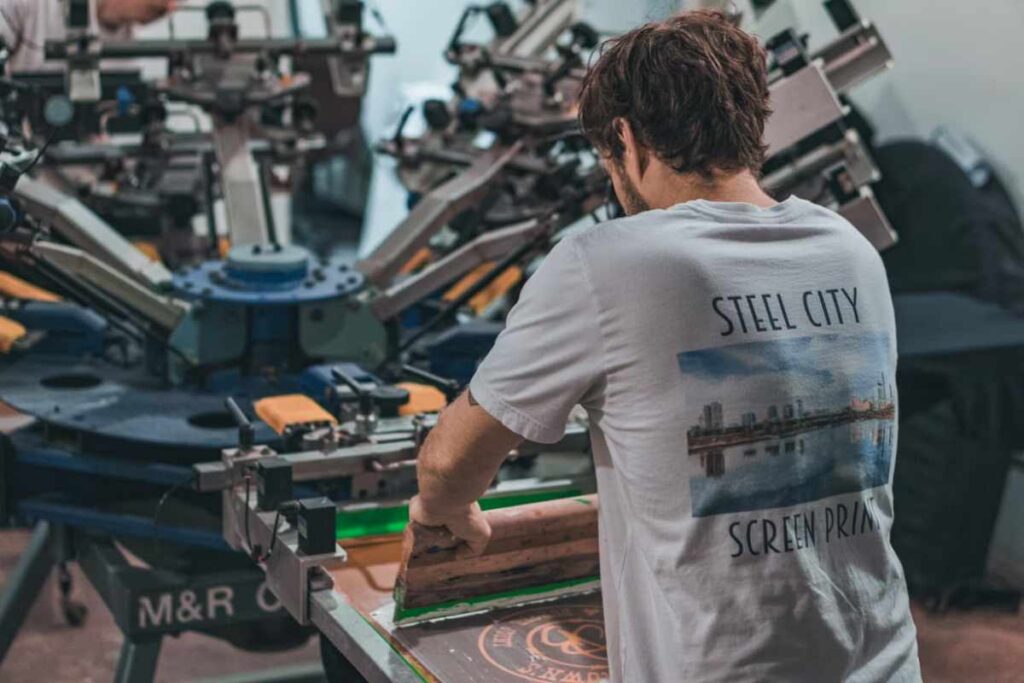Whether you’re an aspiring fashion designer, a small business owner, or just someone who loves a good DIY project, heat transfer printing opens up a world of creative possibilities. From designing your own merch to crafting personalized gifts, the key to success lies in one oftenoverlooked detail: the fabric you choose.
Picking the right fabric isn’t just about looks or feel it’s the foundation that determines whether your design lasts through the wash or peels off after one wear. And if you’re thinking about making custom screen print t-shirts to bolster your brand, understanding fabric compatibility becomes even more important.
So, how do you choose the best fabric for heat transfer printing? Let’s dive in.
Why Fabric Choice Matters in Heat Transfer Printing
Heat transfer printing works by using high temperatures to adhere designs onto fabric. If the fabric can’t handle the heat or doesn’t bond well with the transfer, your design will crack, fade, or peel no matter how flawless your artwork is.
Different fabrics react differently to heat. Some absorb the ink or vinyl beautifully, while others melt, stretch, or resist the transfer entirely. That’s why selecting the right base material is essential to producing professionalgrade results.
Top Fabrics That Work Best
1. Cotton (Especially 100% Cotton)
- Best for: Heat transfer vinyl (HTV), inkjet transfers
- Pros: Breathable, durable, affordable, widely available
- Why it works: Cotton has a smooth, natural fiber surface that bonds excellently with HTV and printed transfers. It holds color well and endures heat like a champ.
2. Polyester
- Best for: Sublimation printing
- Pros: Lightweight, vibrant color retention
- Caution: Can scorch under high temperatures use lower heat settings.
- Why it works: Polyester fibers absorb sublimation ink, locking in bright, detailed designs without fading.
3. PolyCotton Blends (50/50 or 65/35)
- Best for: HTV
- Pros: Soft, less prone to shrinking, holds shape
- Why it works: Combines the durability of polyester with the natural printability of cotton. Great for general apparel printing.
Fabrics You Should Avoid
Not all fabrics are suitable for heat transfer. Here are a few to approach with caution:
- Nylon: Often treated with coatings that repel adhesives.
- Silk: Prone to burning or damage under heat.
- Acrylic: Melts easily under high temperatures.
- Wool: Uneven texture makes transfer difficult and may scorch.
If you must use these fabrics, always test a small patch first.
Heat Compatibility: Get the Settings Right
Even with the best fabric, your results will suffer if your press settings aren’t correct. Here’s a quick cheat sheet:
| Fabric Type | Recommended Temp | Time | Pressure |
| Cotton | 320°F (160°C) | 15 sec | MediumFirm |
| Polyester | 270°F (130°C) | 1015 sec | LightMedium |
| Blends | 300°F (149°C) | 1215 sec | Medium |
Always refer to your heat transfer vinyl or paper instructions for exact settings.
Pro Tips for Perfect Prints
- PreWash Fabrics: Removes sizing chemicals and prevents shrinkage later.
- Use a Teflon Sheet or Parchment Paper: Prevents sticking and protects the fabric during heat pressing.
- Apply Even Pressure: Uneven pressure can cause parts of your design to lift or not transfer properly.
Final Thoughts
The secret to stunning heat transfer results isn’t just your design it’s what’s underneath it. By choosing the right fabric, you set yourself up for durability, comfort, and style. Whether you’re starting a clothing line, printing team uniforms, or launching custom screen print tshirts to bolster your brand, fabric knowledge puts you ahead of the game.
So before you fire up that heat press, take a moment to feel your fabric because the right one makes all the difference.

